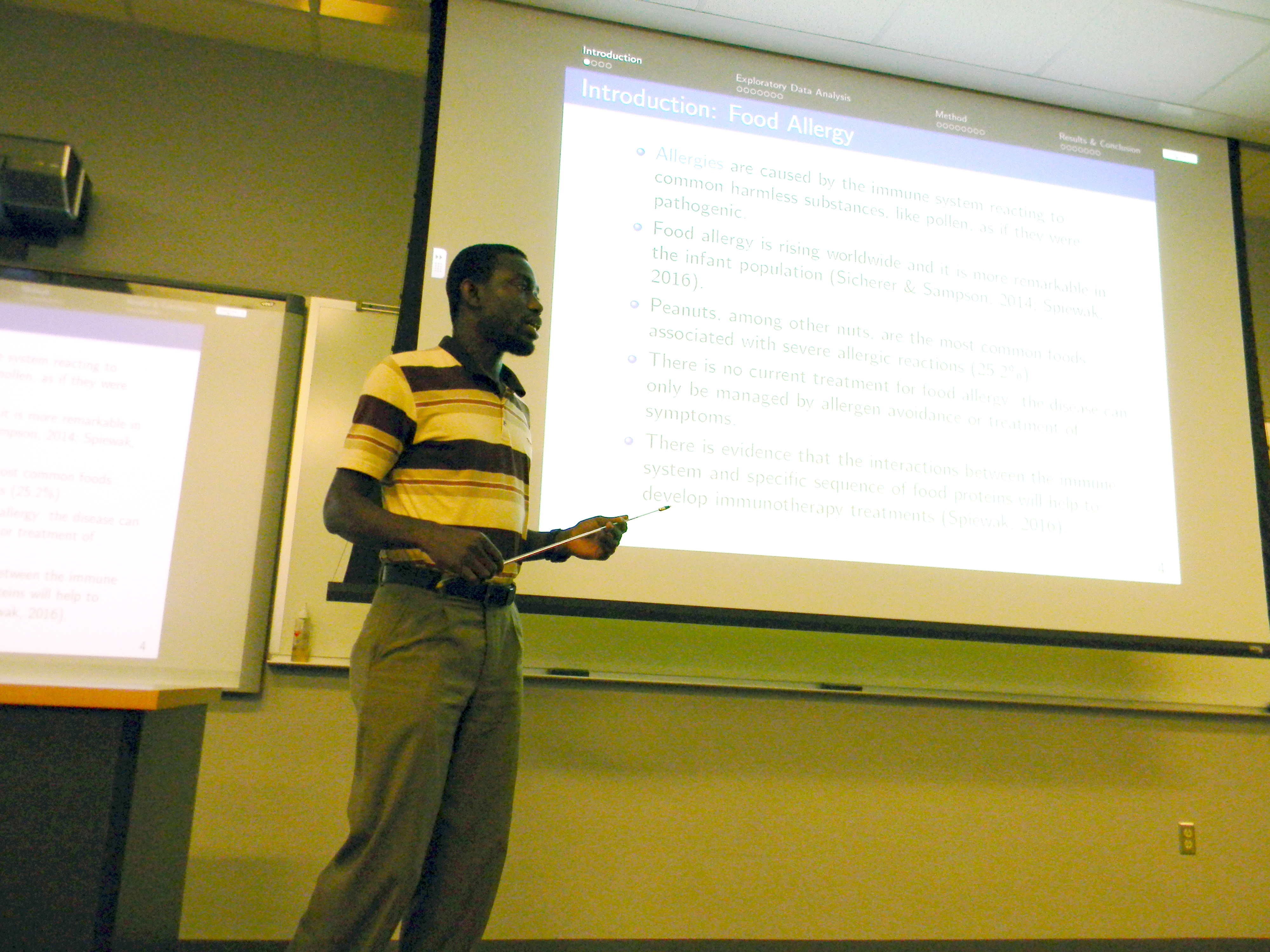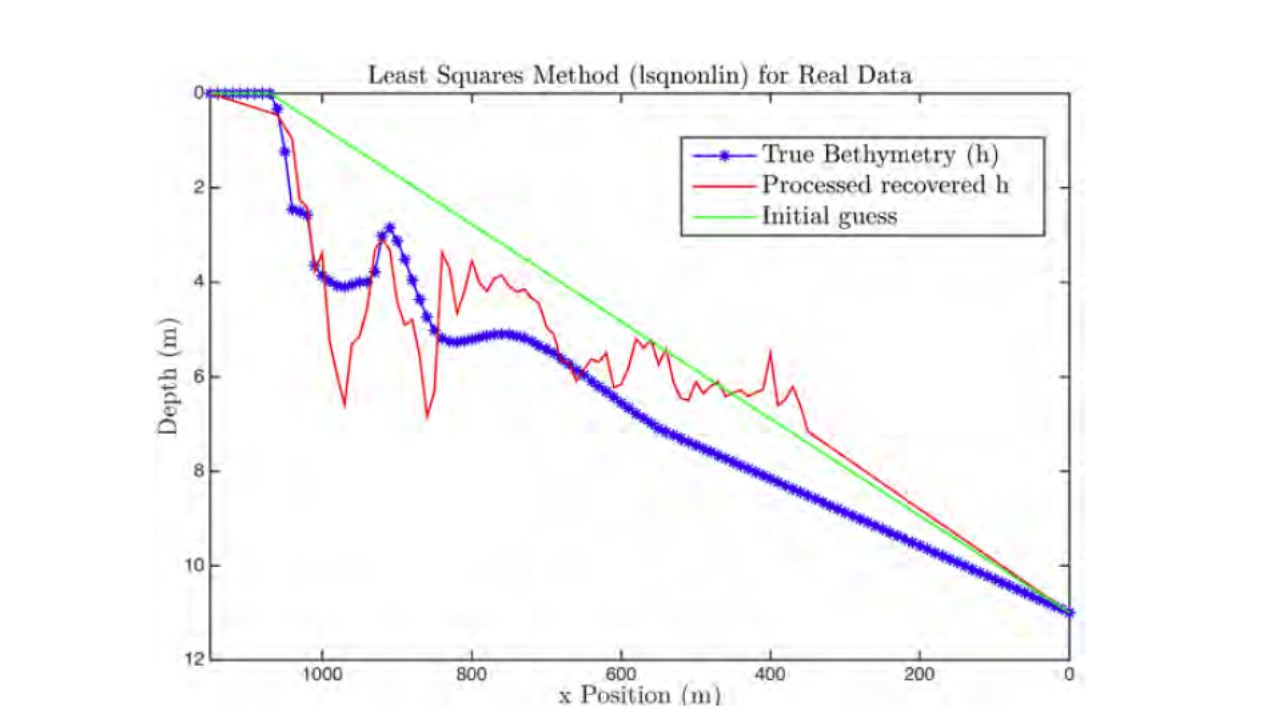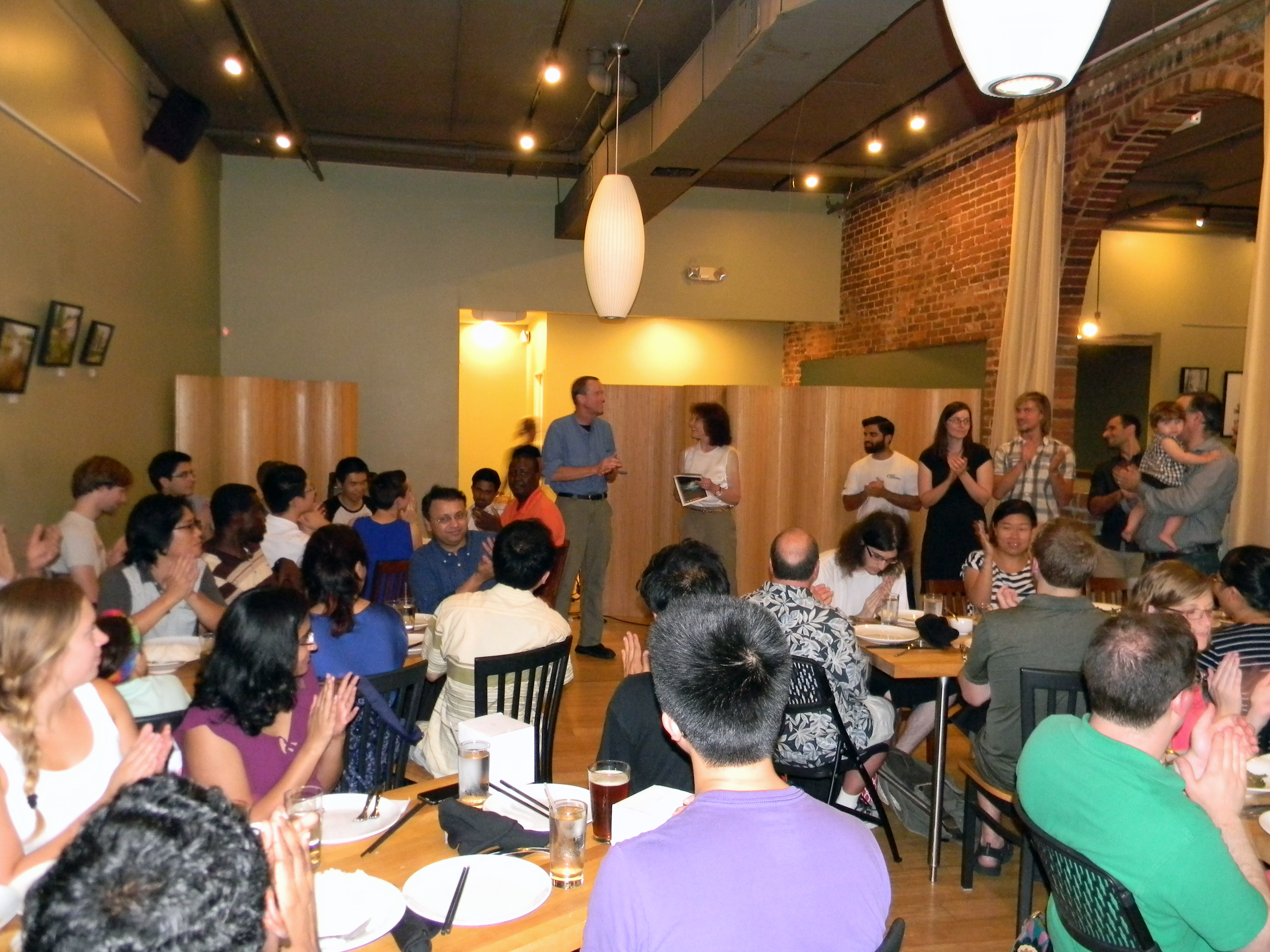The sun set on a hot July day across the street from North Carolina State University, signaling the end of another positive experience in research.
Nearly 40 Graduate Students, of various science, applied mathematics backgrounds and statistics celebrated their accomplishments and experiences after attending the 2016 Industrial Modeling Workshop (IMSM) for Graduate Students in Raleigh, N.C., July 18-27.
This year marked the 22nd anniversary of the IMSM workshop, a major educational outreach component of the Statistical and Applied Mathematical Sciences Institute (SAMSI). Each year, SAMSI invites graduate students from across the country to attend a 10-day workshop, where various industrial and government agencies partner with academia to solve “real world” problems that impact our lives.
This year, SAMSI was pleased to have representatives from: Sandia National Laboratories; Rho, Inc.; the US Army Corps of Engineers (USACE); Environmental Protection Agency (EPA), Pfizer and the Cooperative Institute for Climate and Satellites (CICS). The IMSM workshop is sponsored by SAMSI as well as the Department of Mathematics and the Center for Research in Scientific Computation (CRSC) at N.C. State University.
Graduate students were split into six teams and presented with six different projects from the various industry and lab partners. Subjects of these problems ranged from climate and health to environmental issues. Each team was guided by at least one Industry and one faculty mentor who offered support and helpful hints to make sure the team could develop workable solutions within the allotted time frame.
The IMSM workshop introduces graduate students to the effective application of academic knowledge towards solving “real world” problems. Students also learned valuable skills about time management and team-based research in a time-constrained environment – a practice that is key to achieving results in industry and government labs. The group of students was dynamic, representing such disciplines as Geophysics, Engineering, Biology and of course Applied Mathematics and Statistics. The diversity of students played a pivotal role in helping the teams to develop synergy through their collective strengths and experience in order to reach a common goal. Most students were excited about the opportunity to attend and collectively looked forward to the challenges presented in the IMSM workshop. In the end, industry and lab partners as well as the students benefitted from the experience of producing research results that have the potential to advance “real world” applications.

One highlight of this year’s projects was a problem set directed at ways to identify elements of various allergens in order to develop therapies against food allergies. This important issue was posed by Rho, Inc.
Based on research from the Centers from Disease Control (CDC), food allergies are specifically prevalent in children ages 5 and above. This trend has increased by 18% from 1997 to 2007 and effects nearly 5% of adults and 8% of children. Primarily, eight foods account for 90% of all food allergy reactions: milk, eggs, peanuts, tree nuts, wheat, soy, fish and shellfish.
The students’ focus was to look at nut allergies. Nut allergies make up more than 25% of the most common foods associated with severe allergic reactions. In this specific case, the research developed here could easily be replicated towards the study of other food allergies as well. Allergies are caused by a person’s immune system overreacting to harmless proteins in our food or the environment. One tool for analyzing these proteins is a peptide microarray. These microarrays help to identify parts of certain proteins that trigger allergic reactions. Fragments of allergy-triggering proteins are arranged on small plates or “chips” and exposed to a patient’s blood. Antibodies from the patient’s immune system found in the blood will react with some of the fragments. These interactions can be detected by microscopes or scanning machines. The data from these experiments, however tend to be “noisy” when researchers try to accurately determine which protein fragments react with the patient’s antibodies. The students’ aim was to try to identify a more effective way to clear up the noise in these samples. Clearing up the noise ensures better predictability by the researchers in their analysis.

The data from samples presented by Rho, Inc., had positive markers for a specific nut allergen. The students analyzed these samples and created an algorithm that could identify these patterns more quickly. The students identified the outliers in each sample, which correlated into clearing up the noisy data from these findings. Correctly identifying these outliers made the predictions about this data more reliable and accurate. The result of applying this approach led to identifying 96% of the noise or “bad spots” on a microarray. By identifying these bad spots with a high degree of certainty, one can have a more effective tool to correctly see what protein fragments are triggering allergies.
Though this algorithm was a big break through, still much research needs to be done. The students’ assistance was a positive step forward on this problem. With these new findings, Rho, Inc., can now go back and apply some of these same techniques to their ongoing research for this problem. It is work like this that further justifies the purpose of bringing great minds together in order to tackle some of life’s puzzles and help us all to live more problem free.
USACE presented two problems: one on habitat quality assessments in the Columbia River and the second on using surface wave properties to predict nearshore bathymetry. Bathymetry is a measurement of submarine topography and can be used to indicate changes in the ocean floor. This near shore analysis could prove vital for predicting damage to coastal environments due to major storms or significant erosion. Storm surge and erosion also negatively impact transportation routes and civil infrastructure. Collectively, these factors would prohibit efforts of support agencies to assist the civilian populace with critical needs in an emergency.
The group used USACE data from Duck, N.C., compiled from various resources to determine coastal depths within 500 m of the coastline. This distance is crucial when it comes to large vessels providing logistical aid support. Support agencies want to ensure adequate water depth, keeping these large vessels from running aground in poor conditions. The data could also help to understand the various impacts of erosion on coastal structures and transportation routes. Studies like this have been used in other situations as well, like saving the Historic Lighthouse out at Cape Hatteras.
Accurate measurements of bathymetry in nearshore regions using conventional means are difficult to obtain. Direct measurements are costly and sparse, and the underlying topography is constantly changing.
Currently, obtaining accurate data related to this research requires many man hours and often costly equipment. The students used USACE data on wave height, wave number and ocean depth to understand how information on the wave mechanics can be used to generate a map of the underlying bathymetry. They used mathematical representations of the connections between measurable wave properties and bathymetry to develop a statistical algorithm for estimating the water depths along a one-dimensional profile.

The students used data provided by remote sensing platforms, compiled from airborne, satellite and onshore sensors. They studied the dispersion relationship connecting water depth to surface properties, including wave length and period, and discovered using these factors as input provided a relatively accurate estimate of the bathymetry.
Using three different inversion methods, the students accurately determined ocean floor topography up to 900m away from shore. The students found that by using these multiple measurement types, it helped to reduce the amount “noise” in a given variable. In addition, the students determined which inversion method was the best algorithm to use when attempting to accurately identify this data.
Though the group was successful in finding a solution, more work is still needed. The researchers suggested more refinement of their selected inversion method in order to account for more parameters such as beach profile and more access to wave number profiles throughout a given year. These factors could help to isolate trends in the shifting of the ocean floor, which could lead to making mitigation efforts to correct these issues easier.
The group’s final recommendation was to apply this information to a higher fidelity model in order to assess bathymetry in multiple dimensions. The USACE industry mentor looked upon the results favorably. The students’ findings have the potential for numerous applications in keeping with the USACE mission at home and abroad.

Overall the consensus of the graduate students was that this workshop was helpful in preparing them for their future contributions in research. The IMSM is a valuable tool for industry as well. Industries actively seek qualified up and coming researchers by being a part of workshops like this and the research gained also has the potential to advance the work in their various research. As the workshop closed, the students spent their last night dining together and reflecting on the experiences they shared over the previous week and a half with peers and faculty and industry mentors in the program.
Planning and scheduling by SAMSI has begun for the 2017 IMSM; applications for the workshop next year will be accepted in January. To find out more and apply, interested graduate students should visit the SAMSI website at: www.samsi.info/IMSM17.